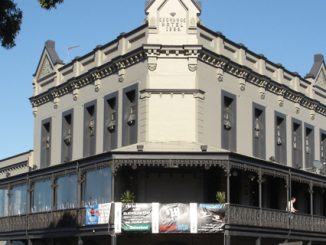
A Chippendale terrace shows it’s possible to be sustainable in the inner city
Since 1996, Michael Mobbs’ energy and water bills have amounted to less than $300 per year. Most people pay about that much every quarter, but Mobbs lives a different lifestyle. His house was disconnected from the main water and sewerage lines twenty years ago, and in 2015 he disconnected from the city’s electricity supply and went completely off-grid.
Living sustainably does not necessarily mean living in the countryside. Mobbs’ terrace house is situated in Chippendale, in inner-city Sydney. According to Mobbs, there are essentially three aspects of off-grid living: generating electricity, collecting water and dealing with waste. Making change in even one of these areas could mean saving stormwater pollution from Sydney’s harbour and beaches, conserving Sydney’s water supply or preventing tonnes of coal from being burnt.
Mobbs runs tours of his sustainable home and the Chippendale road garden every few weeks – they can be booked online at www.sustainablehouse.com.au. In the meantime, draw inspiration from his quick rundown of the three essential aspects of sustainable living.
Electricity
Mobbs catches the sunlight via 30 solar panels. His home has a total system capacity of just over 3.5 kilowatts. A bank of batteries stores the energy for use at night or on very overcast days.
Water
A rainwater collection system provides clean, drinkable water direct from the sky. Water quality is maintained through an enclosed gutter (which excludes leaves and bird droppings), a downpipe with a filter and a diversion system carrying the first 6-10L of soiled rainwater from the roof away from the tank and into the garden.
Wastewater
Possibly the most astonishing aspect of Mobbs’ home: his water recycling system receives wastewater from the shower, bath, dishwasher, washing machine, sinks and tubs. Air is pumped into the system to sustain the life of small critters that eat the waste in the water and clean it. The water is also passed through a sand filter and sterilised by an ultraviolet lamp. The resulting water is clean enough to be used to flush toilets, wash clothes and water the garden. Mobbs’ water recycling and sewage disposal systems annually process about 100,000 litres of sewage, preventing it from entering the Pacific Ocean.
Words by Lucia Moon
